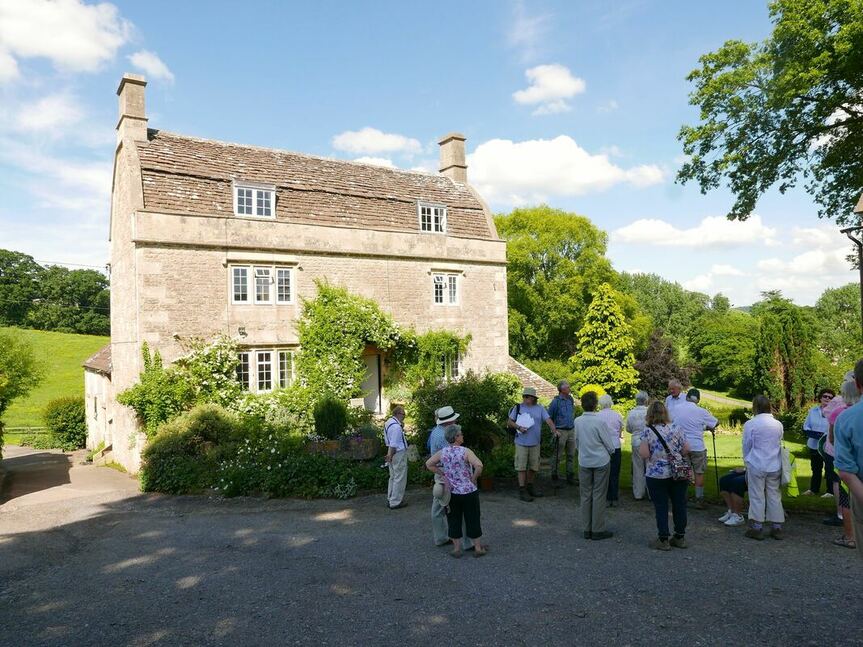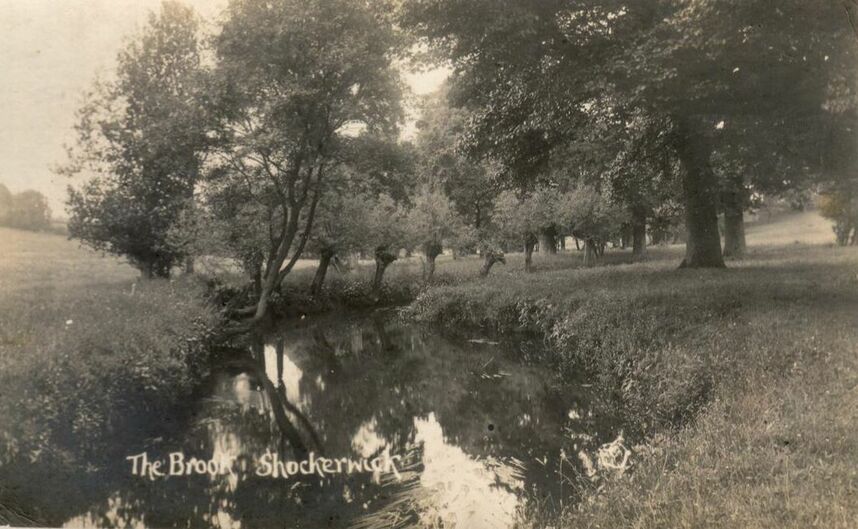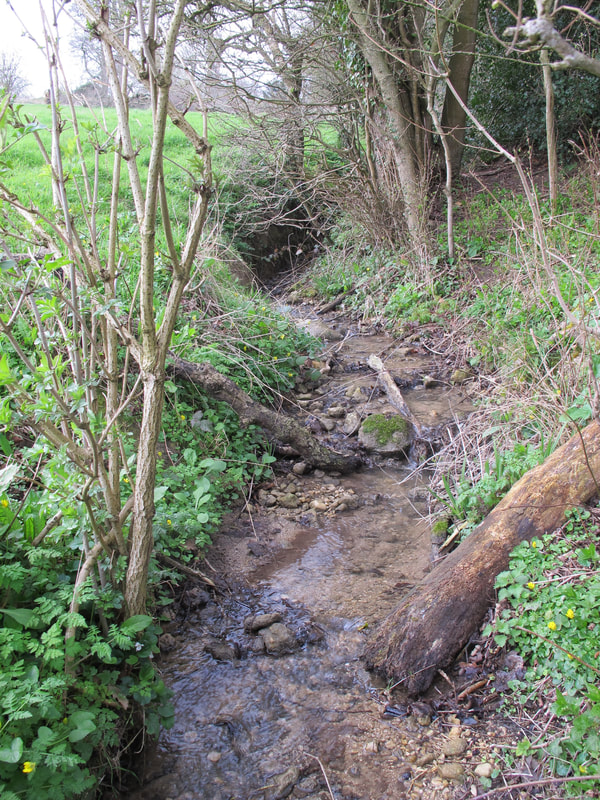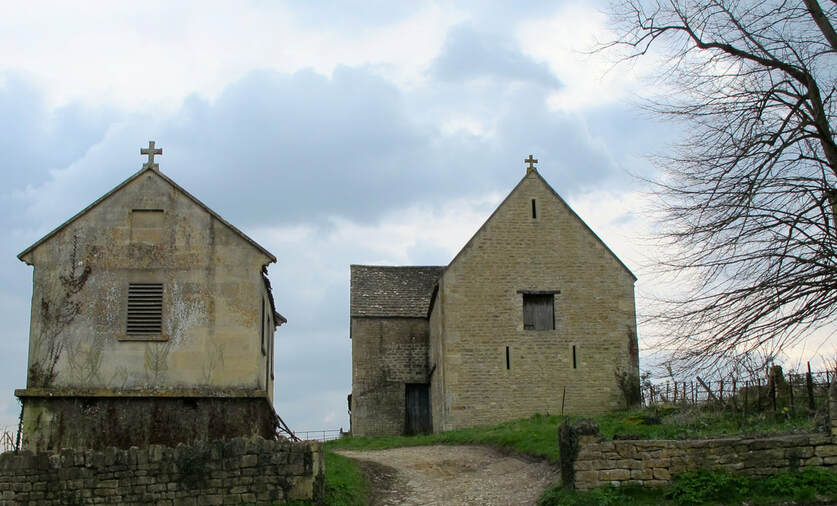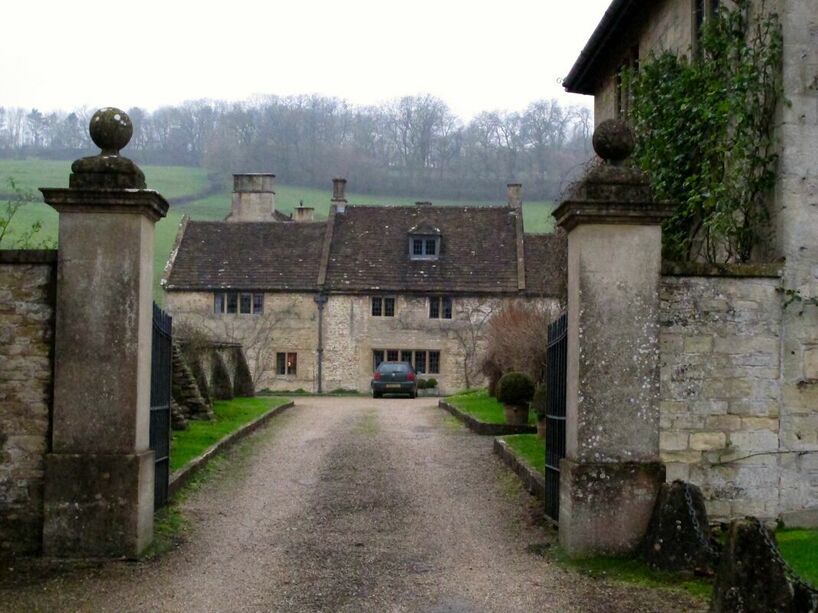Alcombe & Shockerwick Original words 1968 by Richard Hodges Republished June 2018
Photographs Carol Payne unless stated otherwise
Photographs Carol Payne unless stated otherwise
Box NATS was started because local teenagers Richard Hodges and Alison Borthwick were enthused by the excavations at Box Roman Villa in 1967-68. They wanted to discover more about the environment and history of the village. All the 2018 History Trails used Richard Hodges' original words and retraced his footsteps in some of the less well-known hamlets of the Box.
This is a fine walk on a lovely Spring morning, but is not advisable when the corn or grass is very high. I suggest you begin at the bridge behind Valens Terrace where you can glance along the brook. You may see a Dipper or Grey Wagtails in the sandy parts shaded by the willows. Before you go too far glance back at the area next to the Selwyn Hall and try to imagine a 40 room Roman villa with a terraced garden rolling down to the brook.
If you follow the banks of the brook, down stream, you will see moorhens and voles and perhaps if it is warm and the water is low you may see trout roll over to feel the sun's rays before they dart into the dark deeper pools. Kingfishers used to live in the bank on the second sharp right-hand bend: they are wonderful to watch busily feeding their young. If it is early in the day look up at the copse on your right, around the tunnel entrance, you are certain to see many rabbits. Walk on under the railway, into the little field beyond; on your right are poplars and a cedar, in the poplars you may hear the rusty cry of the Spotted Flycatcher which resides here in spring.
Go through the stile and along the track to the road, just to your left on the other side is the stile which commences the path to Shockerwick, across the first field to the hedge, thence following the banks of the brook. It is a difficult path when the corn is high but the corn flowers and the river birds make it worthwhile. Mallards and herons reside with wagtails by the brook which is full of shallow patches, showing sandy-coloured pebbles.
The banks are always decorated with flowers, usually very colourful. You will pass below the Georgian Shockerwick Manor which has a fine façade in keeping with the Bath style. The carter here was a friend of Thomas Gainsborough and used to take Gainsborough's paintings to London to sell. The little village of Shockerwick is built around this large presiding Manor and many of the surrounding houses are very fine; an example is Lower Shockerwick Farm which is covered in beautiful climbing vegetation.
|
You continue to the end of the field to the lane; the rest of this walk continues through such pleasant secluded country lanes. Turn right up the land to the hamlet of Shockerwick. You will disturb the rooks in the chestnuts as you pass the previously mentioned farm. Follow the road up the steep hill, and watch out for badger paths which cross the lane frequently. In this area there are many inhabited sets situated mostly in woods that are full of garlic in the Spring. Incidentally Shockerwick is in Somerset. At the top of the hill turn right, the lane to the left passes through the farm and goes on to Batheaston.
|
This is a narrow high hedged lane; the banks are abundantly covered with primroses as the neighbouring fields are with cowslips and the woods with bluebells in the Spring. Pheasants are bred around here and it is easy to disturb them; warblers hide in the trees, and the most easily distinguished is the Blackcap. The road bends right then left and rises slightly through a potholed region. Badger paths and diggings have disfigured the banks and, if you are lucky, late at night whilst driving along you may see a badger scurry away in the headlights. You will come to a gate on your right, with a beech tree either side, which allows a view down to the back of Shockerwick Manor. The hedges get higher now, but when you pass the chicken farm you are back in Wiltshire. The hedges hide Cuckoo Pint and the climbing Bittersweet, both of which produce deadly poisonous berries. The road comes down to the triangle with a fine walnut tree in the middle, next to Alcombe.
If you turn left you go down the hill with a miniature arboretum on your left and up the hill to the gates of Alcombe Manor. Above the Manor, on the top of the hill, is a large noisy rookery and a badger sett. The Manor is old, possibly built on the site of a former thirteenth century building. The lane to the right of the Manor leads back to Ditteridge, and from there on to Box. Immediately passing the old cottages of Alcombe first the inhabited ones, then the ruined overgrown walls of those long derelict, now only inhabited by blackbirds, robins and tits. The last ruins still visible were once part of a smithy.
If, however, you turn right at the triangle, you pass Old Coles' Farm before coming down the hill to Middlehill and then on to the path back along the brook that you first took from Box. Middlehill was originally built around a Spa that was found there late in the eighteenth century, but the Spa petered out and could not compete with the one at Bath. It explains the ages of many of the houses. There was possibly a mill here too, which might partially explain the enormous millstone recently found in the meadows not far from the Valens Terrace Bridge.
If, instead of going over the bridge, you follow the path back along the railway bank to Mill Lane, before going through the gate, take a look at Brunel's ornate decorations on the lesser Box Tunnel, and look up the line to the famous tunnel of 1836.
Items in italics not included in 2018 walk.
If, instead of going over the bridge, you follow the path back along the railway bank to Mill Lane, before going through the gate, take a look at Brunel's ornate decorations on the lesser Box Tunnel, and look up the line to the famous tunnel of 1836.
Items in italics not included in 2018 walk.
